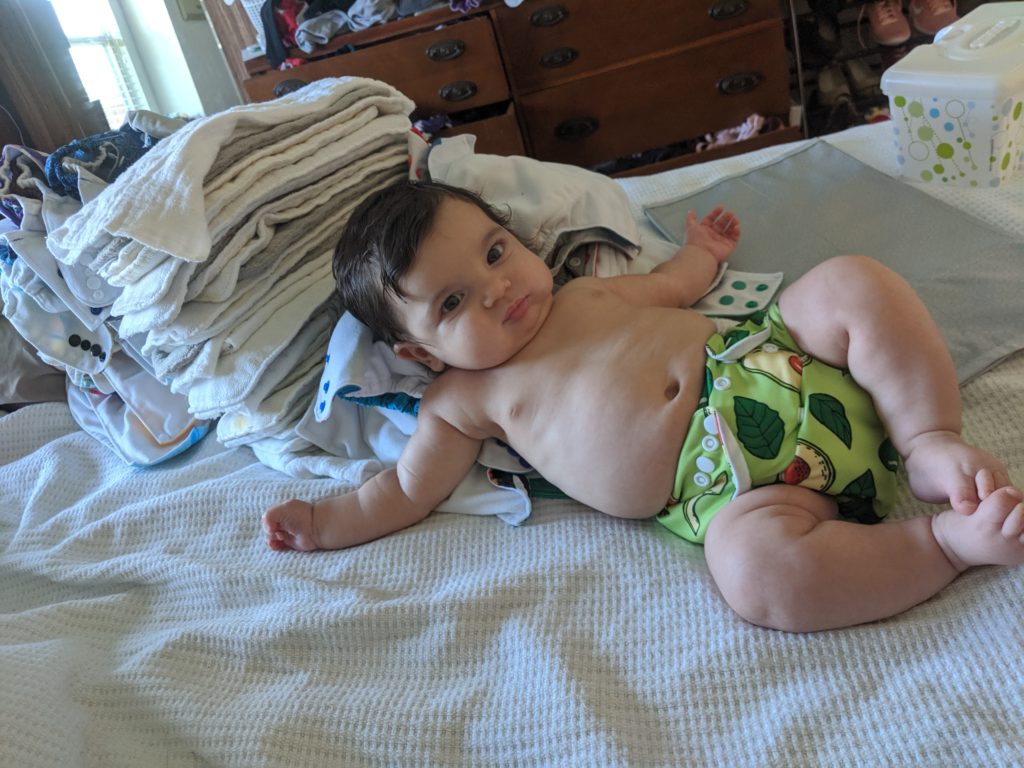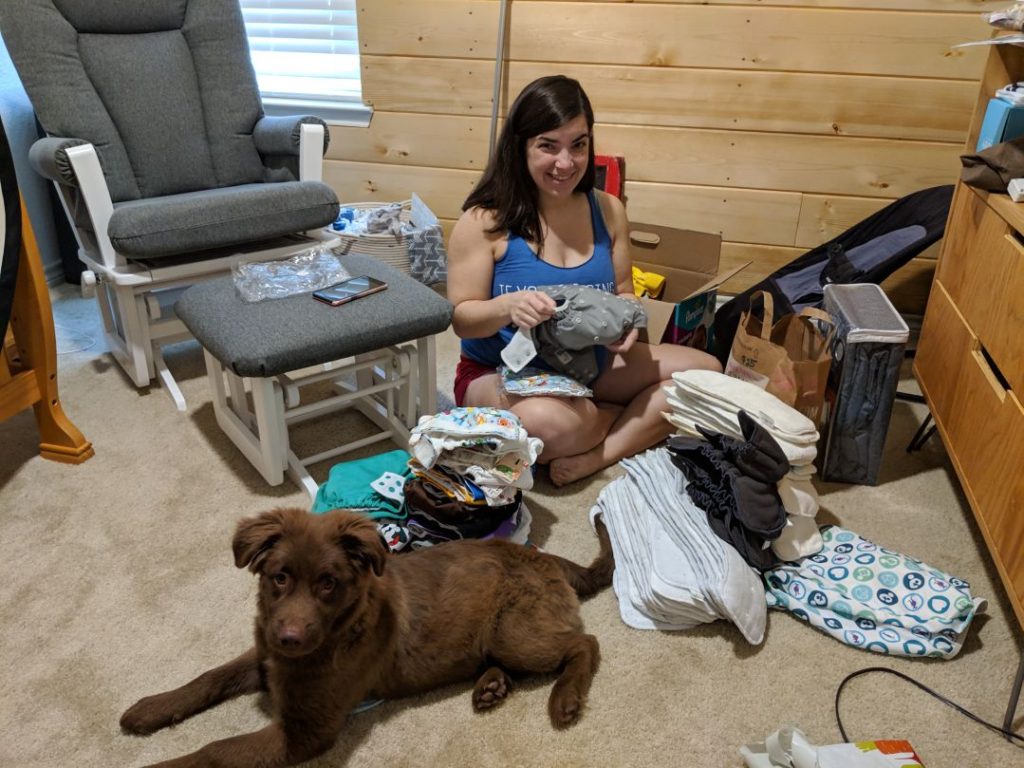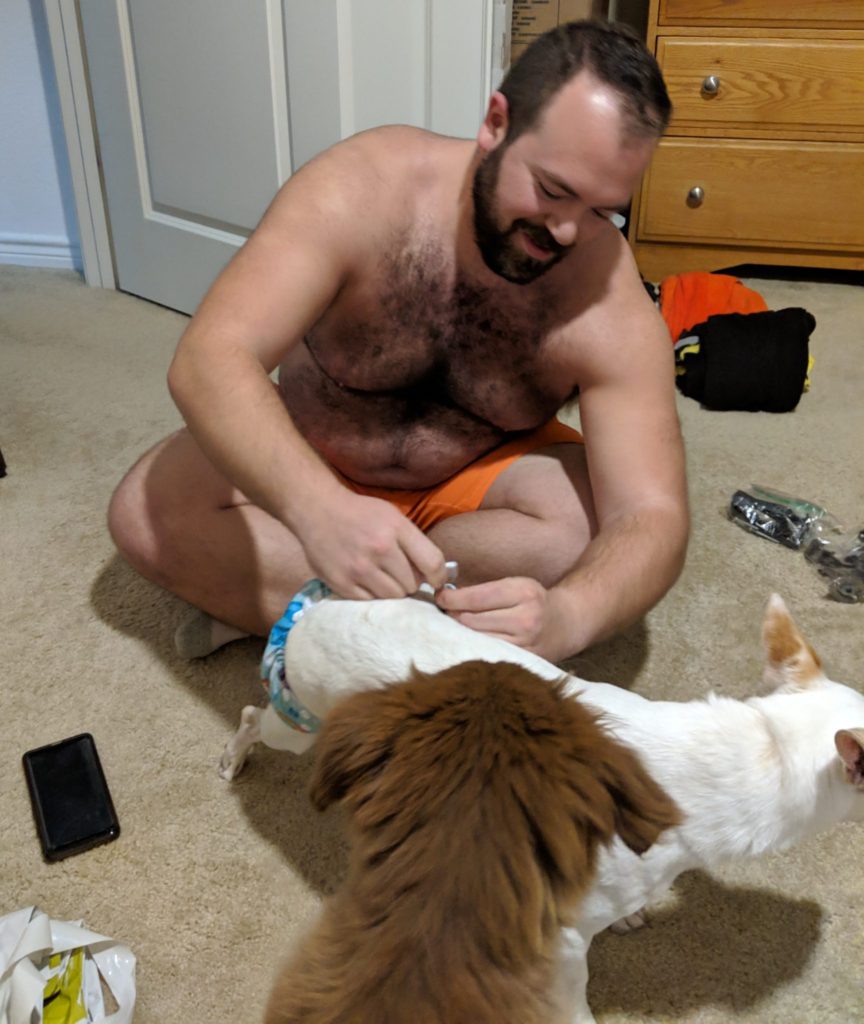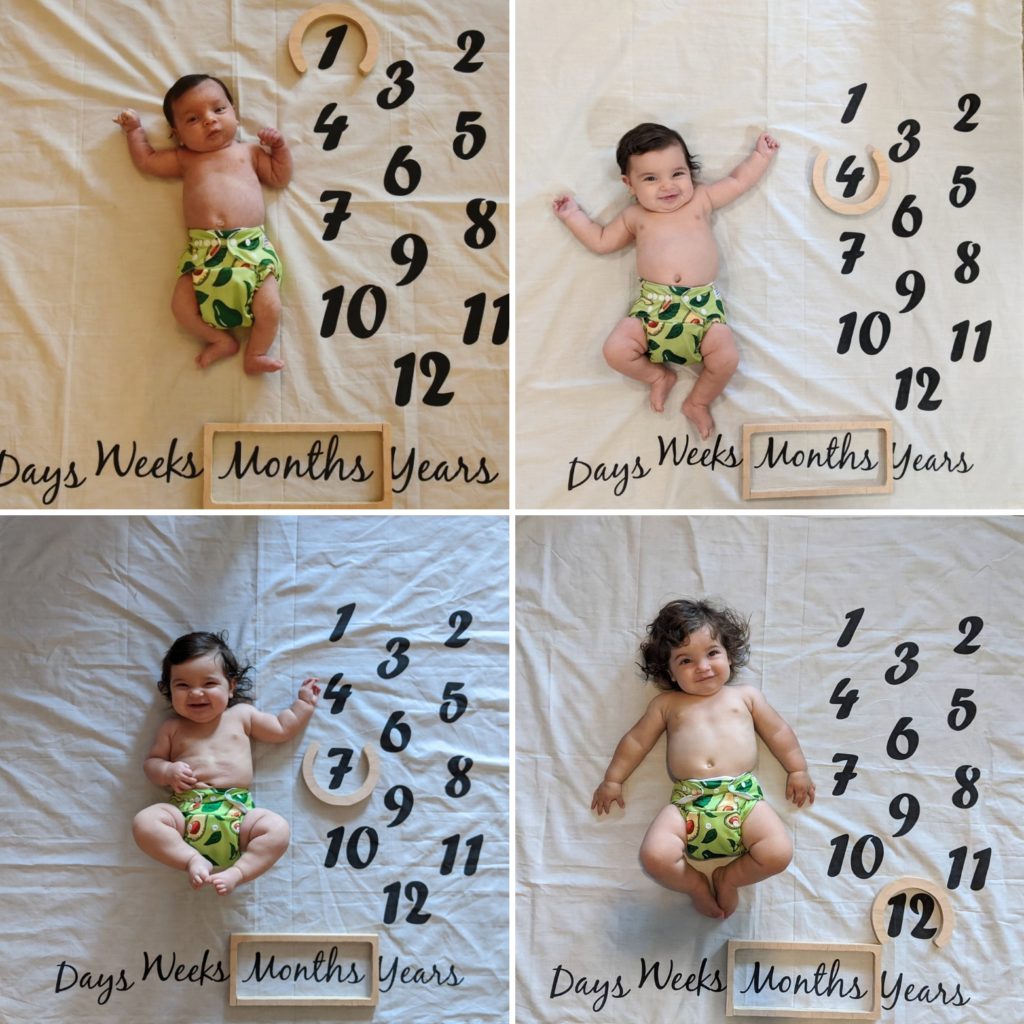“Hey, babe. We should do cloth diapers.”
I didn’t really know how to respond when my husband threw that one my way. Even though we were knee deep in prepping for a homebirth, the thought of doing cloth diapers had truly never entered my mind. To be honest, my first thought (like basically everyone’s first thought) was, “Ew. That sounds gross.”
Excited that my husband was looking at alternatives, I didn’t want to squash this dream. I asked why, and he told me he read that especially for boys in Texas, the breathability of natural fabrics was much better for developing bodies than wrapping them in the plastic of disposable diapers. Cloth diapers keep skin temperature lower than disposables due to better airflow (which also leads to less diaper rash). It made perfect sense to me, and even though we didn’t yet know the sex of our baby, I was intrigued by the idea. After a little more research, we decided: we will cloth diaper our kids.
We mentioned the plan to a few family members, and the response was less than welcoming. Some just laughed in our faces, some said good luck, some said you can try but it probably won’t last. We tried not to let that deter us, and we continued to do our research and stay strong in our decision. To this day, our son has never worn a disposable diaper.
So here are the top reasons why we decided to cloth diaper:
![]()
Cost savings! All in, we spent less than $400 on our diaper stash. And by all in, I mean that’s how much we’ll likely ever need to spend on diapers for all of our children from birth to potty training. We bought many of our diapers second-hand which helped reduce costs as well, but even if you buy an all new stash, you’ll be in for way less than you would be with disposables. By all estimates, families spend at least $2000 on disposable diapers per child (or more if you choose an organic or environmentally friendly brand). Plus with cloth, there is resale value.
![]()
Health of our kids! When I was a kid, my mom always bought me 100% cotton underwear. She taught me from a very early age that the natural fabric was way better for my skin – especially the most sensitive of skin that our underwear covers – than synthetic fabrics like polyester. This idea definitely played a role in our choice to use cloth diapers for our son. Frustratingly, many diaper manufacturers don’t release complete or fully transparent ingredient lists, so parents are left in the dark about what they’re putting on their baby 24/7 for three or four years. When you look at the ingredient lists you can find, it’s astounding how many synthetics and chemicals are wrapped around that fresh newborn skin. No questions asked, the absorption technology in disposables is amazing thanks to the Super Absorbent Polymer gel (sodium polyacrylate). But there are many concerns about the materials used to get the “dry for longer” feeling that most disposable diaper companies tout. That amazingly absorbent sodium polyacrylate is linked to allergic reactions, asthma, decreased sperm count, and toxic shock syndrome. Dioxin, a known carcinogen that has been linked to nerve damage and changes in the immune system, is a byproduct of the chlorine bleaching process. Some disposables include perfume presumably to mask the smell of poop. Unfortunately, the ingredient “fragrance” is not actually a singular item as it appears in an ingredient list. In reality, “fragrance” can be any number of chemicals, and companies do not legally have to tell you what is in their fragrance because it’s considered proprietary knowledge. Even the dyes in the patterns on the diapers have shown traces of heavy metals and have been linked to rashes and irritations in babies. The list goes on and on.
![]()
Better for the environment! The average baby goes through upwards of 6000 diapers in between birth and potty training. In the US alone, 18-20 billion diapers are tossed into landfills every year, most of which can’t decompose at all. On top of that, most families don’t dump the poop out of disposables before tossing them even though all disposable diapers advise the proper disposal of feces. In a few thousand years, those plastic-wrapped poops will be a great source of scientific study, I’m sure! Right about now is when people typically argue that the laundering of cloth diapers is bad for the environment. Yes, it does take additional water to wash diapers which does have an impact, but when we’re talking over the lifespan of a child’s diaper-wearing days, cloth definitely takes the cake for easier on the Earth (especially when you consider the manufacturing process as part of the picture as well).
![]()
Early potty training! My son is our first, so I don’t know this from first hand experience, but many say kids in cloth potty train earlier. They can feel the immediate wetness in cloth before it’s absorbed unlike disposables that have tons of chemicals to keep a dry feel. That immediate feedback leads to more awareness of bodily functions which will make potty training happen earlier and easier. Since disposables became mainstream, the average age of potty training has increased dramatically from around 18 months to somewhere between age three and four.
![]()
More options and customizations! There are so many different types and styles of cloth diapers to choose from. When our son was a newborn, we used a different kind than we do today. Without getting too in the weeds, we used fitteds with a cover when he was a newborn, and we now use pockets. They’re wildly versatile, fit all babies no matter their shape or size, and can be very easily personalized to the needs of each child.
![]()
No (or VERY few) blowouts! For us, it was no blowouts. But I have heard a story here and there of a wild child who could not be contained by cloth, so I can’t make a blanket statement that it doesn’t ever happen. When you think about the typical disposable diaper, what’s missing? Strong elastic, especially across the back. Now think about blowouts and the point of escape. Typically, it goes up the back. In cloth, not only is there a strong and thick piece of elastic all the way around the waist and legs, but because you can size the diaper to your baby nearly perfectly, blowouts up the back and down the legs very rarely happen.
![]()
It’s really not that hard! Remember, the disposable diaper was invented very recently. Before 1948, cloth was the only way to go, and disposables weren’t even the dominant diapering method until sometime in the 80’s. But the cloth diapers of today are far superior to the piece of cloth and safety pins days. Having experience with disposable diapers from my babysitting days, truly, I find cloth no harder than disposables. Plus, I never have to worry about running out of diapers during a pandemic or in the middle of the night. As far as washing them, it’s no different than washing a load of towels, and I wash only two to three times a week. That’s not much additional laundry when you think about the added laundry a child brings anyway. But what about washing the poop?! Isn’t that gross?! Not any more gross than washing any other baby laundry can be. Most parents don’t throw away clothes that have fallen victim to a blowout but rather wash them like you would any other laundry. As every parent knows, you will be interacting with bodily fluids a lot when you have kids. I don’t feel that I interact with any greater amount than my friends who use disposable diapers.
![]()
They’re cute! Sure, this isn’t a scientific, persuasive, or by any means a primary reason why we went cloth, it is certainly a fun aspect. There are SO many cute patterns and designs to choose from. We chose a cute avocado diaper to do our son’s monthly photos in, and I have enjoyed matching his diapers and outfits.
![]()
So there you have it! That’s why we chose to go with cloth diapers. It works amazingly well for our little family, and we fully intend to cloth diaper all of our children. The best advice I ever got about cloth was to just jump in and not overthink it. And if you have questions, ask!







